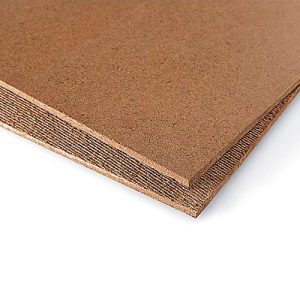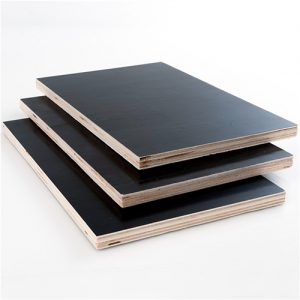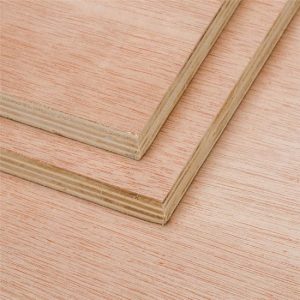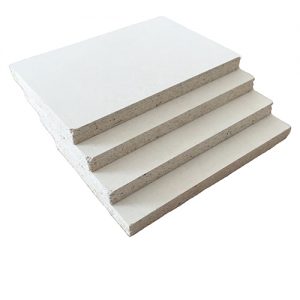What is Chipboard?
Chipboard – also sometimes referred to as Particle Board or Low Density Fibreboard – is made by mixing small wood particles with epoxy resin, which are pressed together under intense heat and pressure to produce a rigid board, typically with a smooth surface. Chipboard is available in a variety of densities to suit different needs and uses, including low, medium and high-density varieties. The lower densities are fairly soft and pliable, while the higher-density chipboards are more rigid and can be used for more heavy-duty applications.
There are various advantages and disadvantages of chipboard as a sheet material. The main advantages are, of course, the cost-effectiveness and versatility of uses that chipboard provides. The main disadvantage is that untreated chipboard is porous and will therefore soak up any water it comes into contact with. This is true for all grades of chipboard, even the highest densities, so it is important to keep untreated chipboard dry and treated to prevent it from soaking up water and swelling, as this will render the board unusable. Thankfully, it is very easy to treat and cover chipboard with water-resistant veneers, melamine coatings and varnishes to make it more robust.
What is Chipboard Used For?
Depending on the density, chipboard is used for all kinds of different interior building and decorating projects. The highest-density grades of chipboard are used for things like:
- Kitchen worktops (coated with melamine)
- Basic structures of kitchen cabinets
- Flooring and flooring insulation/underlay
- Flatpack furniture (usually coated in a veneer)
- Building insulation
- Softer, lower-density chipboard is also often used for:
- Inner elements of furniture (such as drawer bottoms, wardrobe backs and
- Interior home accents e.g. trims and mouldings around windows and doors
- Sound deadening & absorption (e.g. speakers and music venue walls and flooring)
Packaging
Does chipboard sound like the type of material you need for your next project? Here are a few quick tips on how to work with this highly versatile board, including how to cut and paint it safely.
How to Cut Chipboard
Like most wood-like materials, chipboard is best and most easily cut using any mechanical saw such as a band saw, table saw, circular saw or jigsaw. Due to the particular nature of the chipboard, we wouldn’t recommend you try to cut chipboard with a manual hand saw, as this will create very rough edges and an imprecise cutting finish.
If you are cutting raw chipboard, the cutting process is very straightforward. However, if you are cutting chipboard with veneer or melamine coating on one side, it’s best to cut the board with the coated side facing upwards, as the saw may leave a rough edge on the bottom side, which won’t look very attractive.
On a safety note, always wear a dust mask over your mouth and nose when cutting chipboard to protect against inhaling any fine dust and epoxy chemicals released from the board.
How to Paint & Seal Chipboard
Chipboard may be highly versatile and cost-effective, but it can be tricky to paint and treat if you’re unfamiliar with the proper process. Here are the basic steps on how to paint chipboard and seal it; ideal if you’re planning a DIY build project with your chipboard.
- Prepare the chipboard
Chipboard won’t take on your paint coverage unless it is completely clean, free of oily marks and dust particles. Wearing gloves, start by closely inspecting the surface of your chipboard and wipe away any oily marks with a cloth soaked in water and washing up liquid (make sure you wring it out so it’s just damp, so as not to soak your board). Loosely cover your board in protective sheeting to protect it from further dust and debris, and leave in an airy space to dry out completely for two days before you move on to the next step.
- Sand the board down
Using a piece of medium-grit sandpaper (or an electric sander for large expanses of board), sand down the entire board to remove any surface imperfections. Sanding to a smooth surface finish will also help your sealant and paint stick to the board more easily. Once you’ve sanded the entire board, use a dry cloth to wipe it down and remove any remaining board particles.
- Prime the chipboard
Priming your chipboard gives it a protective layer against moisture and dirt, while also creating a better surface for your paint to stick to. Start by placing your board on a protected surface in a well-ventilated space, and make sure you’re wearing gloves before you start, as you don’t want to get these substances on your skin.
Using a smooth paint roller, apply your primer in a thin, even layer and leave to dry completely as per the instructions on your chosen primer product. Repeat two or three times to build up several layers of primer, as these layers will stick to one another and provide a stronger, more protective barrier than you would get with just one layer.
- Start painting your chipboard
Your chipboard is now ready to paint. The best type of paint to use on chipboard is acrylic, or any paint without a heavy water or oil base. Paints with too much water or oil risk soaking into the chipboard’s porous surface, even when primed, creating an uneven finish. Using a fresh paint roller, apply your paint in even coats just like you did with your primer. Allow to dry completely before adding another coat – you may need three or four coats before you achieve the level of coverage you want.
- Seal your chipboard
Once your paint is dry, it’s time to seal your chipboard. Sealing the board will protect your paint from damage and give it an attractive, glossy finish, while also adding an extra protective barrier against moisture. Find a clear sealant product suitable for chipboard, and apply in an even layer with a clean roller. Allow this first layer to dry and then add a second coat for good measure.
And that’s it! That’s how to paint chipboard – easy when you know how.
If you’re looking for solid, high-quality chipboard for your next flooring or furniture project, explore our range of floor grade and furniture grade chipboard here at Arnold Laver to get started.








